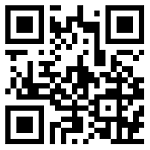提醒:点这里加小编微信(领取免费资料、获取最新资讯、解决考教师一切疑问!)
句型变换·肯定句变成否定句
1. 若原句中有动词be
原句中含有be动词(am, is, are, was, were) 和助动词(have, has, had) 和情态动词(can, shall, will, may, should, would, might, had better等)时,要在动词后直接加not。如:
His mother has already called the police for help.
His mother ________ called the police for help ________. (答案:hasn’t, yet)
2. 若原句中没有动词be
原句中没有be动词,助动词或情态动词时,要在行为动词前加助动词(do, does, did)与否定副词not的缩写形式。另外,还需要将原句子中的some改为any; too改either;already改为yet。还需要分清do, have等是实义动词还是助动词。如:
The old man hurt his leg last Wednesday.
The old man ________ ________ his leg last Wednesday. (答案:didn’t hurt)
3. 若原句中有不定代词
原句中含有every, everything, all, both等不定代词或both…and…, a lot of 等短语时,与否定副词not连用属部分否定。把这些不定代词变成neither, none, no one或把both…and…变成neither…nor…时,才是全部否定。如:
Both Joy and Sam like singing Beijing Opera.
________ Joy ________ Sam likes singing Beijing Opera.(答案:Neither, nor)
4. 若原句为复合句
在含有宾语从句的主从复合句中,当主句的主语是第一人称,谓语动词是think时,如果要否定后面的宾语从句,习惯上否定主句的谓语动词。如:
I think she will come here soon. →I don’t think she will come here soon.
提醒:点这里加小编微信(领取免费资料、获取最新资讯、解决考教师一切疑问!)









